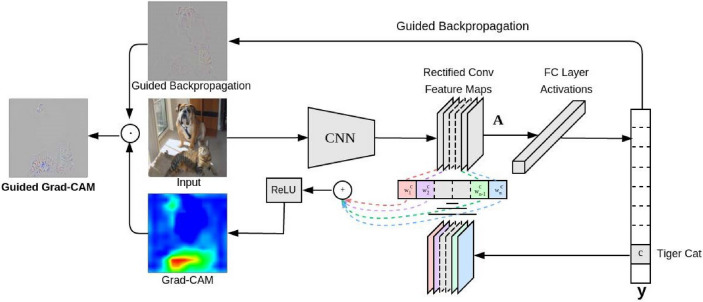Fig. 4.
Grad-CAM overview: Given an image as input, we can obtain the predicted score of the target class by forward propagating the image through the convolutional neural network and task-specific network. Then the gradient of the target class is set to 1, and the others are set to 0. This signal is then backpropagated to the rectified convolutional feature maps of interest, which we combine to compute the coarse Grad-CAM localization, which represents where the model has to look to make the particular decision. Finally, we pointwise multiply the heatmap with guided backpropagation to get Guided Grad-CAM visualizations that are both high-resolution and concept-specific [33]

